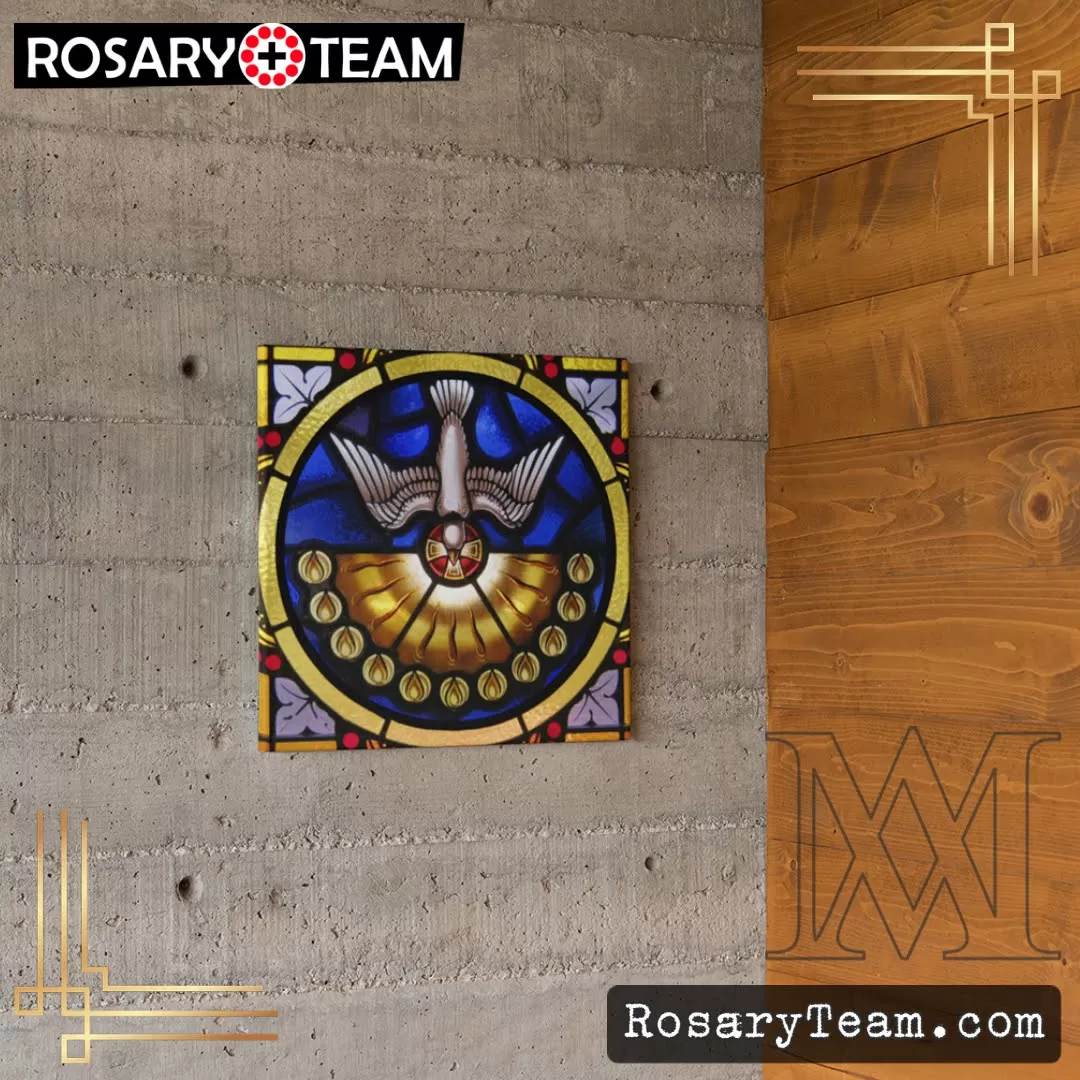SAINT ADELPHUS
SAINT ADELPHUS
Saint Adelphus, Bishop and confessor at Metz, France, is listed in the pre-1970 Roman Martyrology. Died: 5th century, Feastday: August 29.
rosary.team

SAINT ADELPHUS
Saint Adelphus, Bishop and confessor at Metz, France, is listed in the pre-1970 Roman Martyrology. Died: 5th century, Feastday: August 29.
rosary.team

SAINT ACEPSIMAS
Bishop and martyr, a victim of the Persian persecutions in Hnaita, Persia. He was arrested during the anti-Christian campaigns of King Shapur II and was taken before a court where he publicly announced his faith. Records indicate that Acepsimas, the local bishop, was more than eighty when he was arrested. As a result of his steadfastness, he was tortured to death. Died: 376 Feastday: April 22.
rosary.team

SAINT BLAISE
According to tradition Saint Blaise was a bishop of Sebaste, Armenia, in the early part of the fourth century. Saint Blaise suffered martyrdom under the Roman emperor Licinius who had commanded the governor of the province, Agricolaus, to prevent the spread of Christianity in
his territory.
Saint Blaise fled to the mountains and lived in a cave where he used his skill to heal the animals that he found wounded or sick. He was discovered in this cave by the emperor’s hunters and they carried him off to Agricolaus as a special prize.
Tradition tells us that on the way to Agricolaus they met a poor woman whose pig had been seized by a wolf. Saint Blaise commanded the wolf to restored the pig to its owner alive and unhurt. He also miraculously cured a child who was choking to death on a fishbone. This is the reason Saint Blaise is often invoked by persons suffering from throat trouble. When he had reached the capital and was in prison awaiting execution, the old woman whose pig he had
saved came to see him and gave him two fine wax candles to dispel the gloom of his dark cell.
Saint Blaise is supposed to have been tortured with an iron comb or rake and beheaded.
His emblems are an iron comb and a wax taper. Feast day is February 3.
rosary.team

SAINT ELIZABETH
Saint Elizabeth has the distinction of being one of the first to know about Mary’s great blessing as the Mother of God. Zachary was a priest in Jerusalem whose wife, Elizabeth Mary’s cousin was beyond child bearing age. He was told by an angel in a vision that they would have a son and should name him John. When he doubted this he was struck dumb. Elizabeth was visited by Mary at which time Mary spoke the hymn of praise now known at the Magnificat. After John’s birth Zachary’s speech was restored.
An unvarifiable tradition has Zachary murdered in the Temple when he refused to tell Herod where his son John was to be found.
Their feast day is November 5th.
rosary.team

SAINT MICHAEL THE ARCHANGEL
St. Michael is one of the principal angels; his name was the war-cry of the good angels in the battle fought in heaven. His name is recorded four times in Scripture:
1. Daniel 10:13 sqq., Gabriel says to Daniel, when he asks God to permit the Jews to return to Jerusalem: “The Angel [D.V. prince] of the kingdom of the Persians resisted me . . . and, behold Michael, one of the chief princes, came to help me . . . and none is my helper in all these things, but Michael your prince”;
2. Daniel 12, the Angel speaking of the end of the world and the Antichrist says: “At that time shall Michael rise up, the great prince, who standeth for the children of thy people.”
3. In the Catholic Epistle of St. Jude: “When Michael the Archangel, disputing with the devil, contended about the body of Moses”. St. Jude alludes to an ancient Jewish tradition of a dispute between Michael and Satan over the body of Moses, an account of which is also found in the apocryphal book on the assumption of Moses (Origen, “De principiis”, III, 2, 2). St. Michael concealed the tomb of Moses; Satan, however, by disclosing it, tried to seduce the Jewish people to the sin of hero-worship. St. Michael also guards the body of Eve, according to the “Revelation of Moses” (“Apocryphal Gospels”, etc., ed. A. Walker, Edinburgh, p. 647).
4. Apocalypse 12:7, “And there was a great battle in heaven, Michael and his angels fought with the dragon.” St. John speaks of the great conflict at the end of time, which reflects also the battle in heaven at the beginning of time.
Christian tradition gives to St. Michael four offices: To fight against Satan. To rescue the souls of the faithful from the power of the enemy, especially at the hour of death. To be the champion of God’s people, therefore he was the patron of the Church, and of the orders of knights during the Middle Ages. To call away from earth and bring men’s souls to judgment.
VENERATION
The place where he was first venerated, in Phrygia, his prestige as angelic healer obscured his interposition in military affairs. Tradition relates that St. Michael in the earliest ages caused a medicinal spring to spout at Chairotopa near Colossae, where all the sick who bathed there, invoking the Blessed Trinity and St. Michael, were cured.
More famous are the springs which St. Michael is said to have drawn from the rock at Colossae (Chonae, the present Khonas, on the Lycus). The pagans directed a stream against the sanctuary of St. Michael to destroy it, but the archangel split the rock by lightning to give a new bed to the stream, and sanctified forever the waters which came from the gorge.
The Christians of Egypt placed their life-giving river, the Nile under the protection of St. Michael.
In Normandy: St. Michael is the patron of mariners in his sanctuary at Mont-Saint-Michel in the diocese of Coutances. He is said to have appeared there, in 708, to St. Aubert, Bishop of Avranches.
In Germany: St. Michael replaced for the Christians the pagan god Wotan, to whom many mountains were sacred, hence the numerous mountain chapels of St. Michael all over Germany.
In art: St. Michael is represented as an angelic warrior, fully armed with helmet, sword, and shield (often the shield bears the Latin inscription: Quis ut Deus), standing over the dragon, whom he sometimes pierces with a lance. He also holds a pair of scales in which he weighs the souls of the departed (cf. Rock, “The Church of Our Fathers”, III, 160), or the book of life, to show that he takes part in the judgment.
rosary.team

SAINT AGIA
Benedictine and wife of St. Hiduiphus of Hainault, also called Aye or Austregildis. She entered the nunnery at Mons when St. Hidulphus became a monk. Died: 714, Feastday: April 18.
rosary.team

BI. ADALBERO
A bishop and defender of papal authority who endured trials for his loyalty. Adalbero was the son of an Austrian count of Lambach and studied in Paris. He was named the bishop of Wurzberg, Germany, but was forced into exile after defending Pope Gregory VII against King Henry IV. He retired to the Benedictine abbey in Lambach, where he remained until his death. Died: 1090, Feastday: October 6.
rosary.team

SAINT BEDE CONFESSOR
Saint Bede was born on the lands of the monastery of Wearmouth and Jarrow, which stood on the River Tyne in northeastern England. At the age of seven he was given by his relatives to the Abbot Benedict to be educated. From that time he spent his whole life in the monastery
devoting himself to the study of the Scriptures. He was a born scholar. “Through all the observance of monastic discipline,” Bede wrote, “it has ever been my delight to learn and teach and write.” In his nineteenth year he was admitted to the diaconate and in his thirtieth to the priesthood, both by the hands of Bishop John of Beverley and at the bidding of the Abbot Ceolfrid. “From the time of my ordination up till my present fifty-ninth year I have endeavored for my own use and for that of the brethren to make brief notes upon the Holy Scriptures, either out of the works of the venerable fathers or in conformity with their meaning and interpretation.” Bede then gives a list of his many writings,- works on science, chronology, poetics, and history, as well as commentaries on the Scriptures. He concludes with these pious words: “And I pray Thee, loving Jesus, that as Thou hast graciously given me to drink in with delight the words of Thy knowledge, so Thou wouldst mercifully grant me to attain one day to Thee, the fountain of all wisdom, and to appear forever before Thy face.”
Beyond a few visits to friends in other monasteries, Bede’s life was passed at Jarrow in one round of prayer and praise, writing and study. A fortnight before Easter in the year 735, he began to be much troubled by shortness of breath, and his brothers realized that the end was near. Nevertheless his pupils continued to study by his bedside and to read aloud, though their reading was often interrupted by tears. He for his part talked and read to them and sang praises to God. During the Forty Days from Easter to Ascension Day, he took time from his singing and instructing to start dictating two new books, one a translation of St. John’s Gospel into Anglo-Saxon, and the other a collection of notes from se. Isidore. On the Tuesday before Ascension Day he began to grow weaker. He passed the day cheerfully and kept on with his dictation, saying occasionally to the scribe: “Go on quickly; I do not know how long I shall hold out and whether my Maker will not soon remove me.” After a wakeful night he began to dictate the last chapter of St. John. At three in the afternoon he sent for the priests of the monastery, distributed among
them some pepper, incense, and a little linen which he had by him in a chest, and asked for their prayers and Masses. That evening the boy who was taking down his translation of the Book of John said: “There is still one sentence, dear master, that I have not written.” That last sentence was supplied, the boy said it was finished, and the dying man murmured: “You have well said, all is finished. Now take my head in your hands that I may have the comfort of sitting opposite the holy place where I used to pray, and so sitting may call upon my Father.” And on the pavement of his cell, the brothers around him singing “Glory be to the Father, and to the Son, and to the Holy
Ghost,” he peacefully breathed his last.
The title of “Venerable” by which Bede is usually known was a term of respect bestowed in ancient times on highly esteemed members of religious orders. We find it applied to Bede by the Council of Aix-la-Chapelle in 836, and it has clung to him through succeeding centuries. Though in 1899 he was named Saint and Doctor of the Church, “Venerable” remains his special designation to this day.
rosary.team

SAINT ACIUS
Martyrs of minor orders. Acius was a deacon and Aceolus was a subdeacon, both probably studying for the priesthood. They were taken prisoner during Emperor Diocletian’s persecution near Amiens, France. Both are revered in Amiens. Died: 303, Feastday: May 1.
rosary.team

SAINT MARK
Saint Mark’s mother was a prominent member of the infant Church at Jerusalem; it was to her house that Peter turned on his release from prison; the house was approached by a porch there was a slave girl to open the door and the house was a meeting place for the brethren, “many” of whom were praying there the night Saint Peter arrived from prison (Acts, xii, 12-13).
When, on the occasion of the famine of A.D. 45-46, Barnabas and Saul had completed their ministration in Jerusalem, they took Mark with them on their return to Antioch (Acts, xii, 25). The context of Acts, xiii, 5, suggests that he
helped even in preaching the Word. When Paul and Barnabas resolved to push on from Perga into central Asia Minor, Mark, departed from them and returned to Jerusalem (Acts, xiii, 13). What his reasons were for turning back, we cannot day with certainty; Acts, xv, 38, seems to suggest that he feared the toil. At any
rate, the incident was not forgotten by Saint Paul, who refused on account of it to take Mark with him on the second Apostolic journey. This refusal led to the
separation of Paul and Barnabas, and the latter, taking Mark with him, sailed to Cyprus (Acts, xv, 37-40). At this point (A.D. 49-50) we lose sight of Mark in Acts, and we meet him no more in the New Testament, till he appears some ten years afterwards as the fellow worker of Saint Paul, and in the company of Saint Peter, at Rome.
Saint Paul, writing to the Colossians during his first Roman imprisonment (A.D. 59-61), says: “Aristarchus, my fellow prisoner, saluteth you, and Mark, the cousin of Barnabas, touching whom you have received commandments; if he come unto you, receive him” (Col., iv, 10).
The Evangelist’s intention of visiting Asia Minor was probably carried out, for Saint Paul, writing shortly before his death to Timothy at Ephesus, bids him pick up Mark and bring him with him to Rome, adding “for he is profitable to me for the ministry” (II Tim., iv, 11). If Mark came to Rome at this time, he was probably there when Saint Paul was martyred.
Saint Mark had been the interpreter (hermeneutes) of Peter, and wrote down
accurately, though not in order, the teaching of Peter. A widespread, if somewhat late, tradition represents Saint Mark as the founder of the Church of Alexandria. The “Martyrologium Romanum” (25 April) records: “At Alexandria the anniversary of Blessed Mark the Evangelist . . . at Alexandria of Saint Anianus Bishop, the disciple of Blessed Mark and his successor in the episcopate, who fell asleep in the Lord.” The date at which Mark came to Alexandria is uncertain. The Chronicle of Eusebius assigns it to the first years of Claudius and later on states that Saint Mark’s first successor, Anianus,
succeeded to the See of Alexandria in the eighth year of Nero . This would make Mark Bishop of Alexandria for a period of about twenty years. This is
not impossible, if we might suppose in accordance with some early evidence that Saint Peter came to Rome in A.D. 42, Mark perhaps accompanying him. But Acts raise considerable difficulties. On the assumption that the founder of the Church of Alexandria was identical with the companion of Paul and Barnabas, we find him at Jerusalem and Antioch about A.D. 46 (Acts xii, 25), in
Salamis about 47 (Acts, xiii, 5), at Antioch again about 49 or 50 (Acts, xv, 37-9), and when he quitted Antioch, on the separation of Paul and Barnabas, it was
not to Alexandria but to Cyprus that he turned (Acts, xv, 39).
The date of Mark’s death is uncertain. Saint Jerome (“De Vir. Illustr.”, viii) assigns it to the eighth year of Nero (62-63) (Mortuus est octavo Neronis anno et sepultus Alexandriæ), but this is probably only an inference from the statement of Eusebius (“Hist. eccl.”, II, xxiv), that in that year Anianus succeeded St. Mark in the See of Alexandria. Certainly, if Saint Mark was alive when II. Timothy was written (II Tim., iv, 11), he cannot have died in 61-62. Nor does Eusebius say he did; the historian may merely mean that Saint Mark then resigned his see, and left Alexandria to join Peter and Paul at Rome. As to the manner of his death, the “Acts” of Mark give the saint the glory of martyrdom, and say that he died while being dragged through the streets of Alexandria.
rosary.team